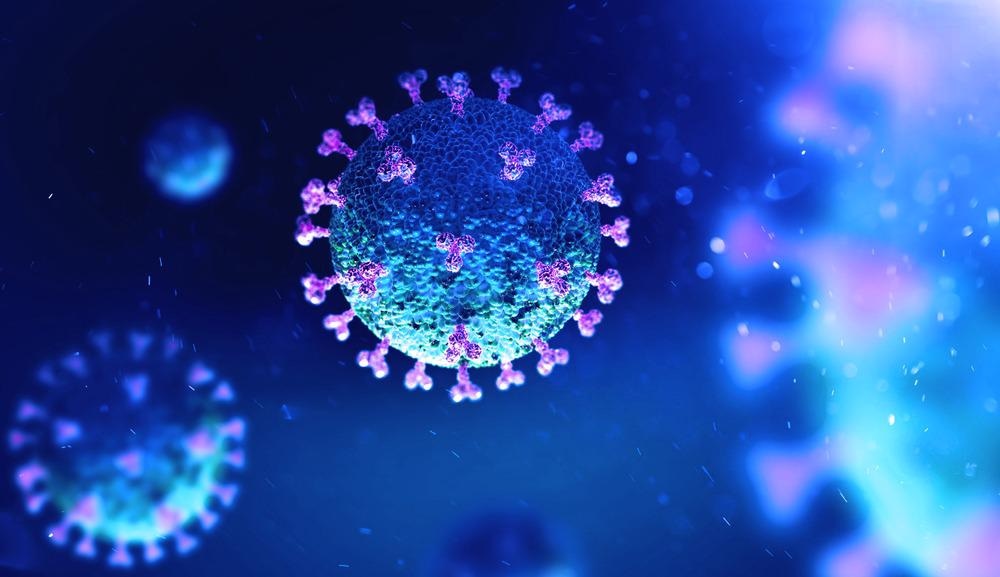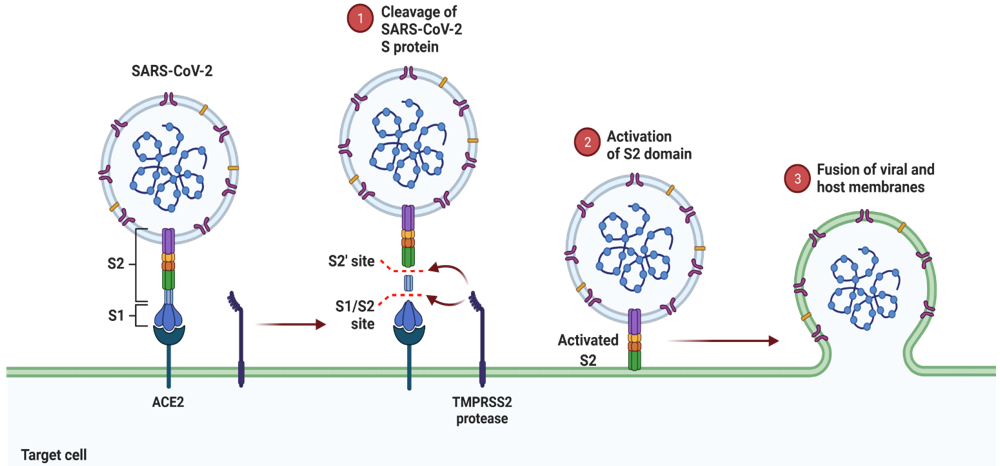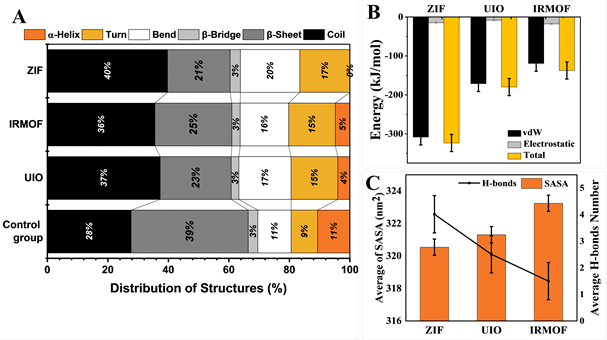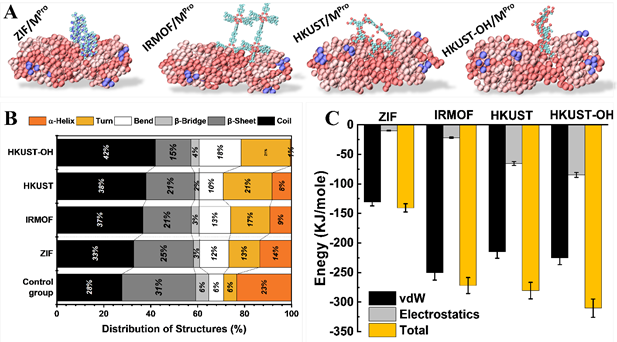.jpg) By Susha Cheriyedath, M.Sc.Reviewed by Skyla BailyFeb 4 2022
By Susha Cheriyedath, M.Sc.Reviewed by Skyla BailyFeb 4 2022In a Scientific Reports research paper posted to the Research Square preprint* server, researchers investigated the use of metal-organic framework (MOFs)-based nanomaterials against coronavirus disease 2019 (COVID-19). They also evaluated the interactions between these 3D MOFs and the main protease (Mpro) of severe acute respiratory syndrome coronavirus 2 (SARS-CoV-2), the causative agent of COVID-19.

Study: Metal-Organic Frameworks (MOFs); A Promising Approach to Combat SARS-CoV-2. Image Credit: Andrii Vodolazhskyi/Shutterstock.com
Background
COVID-19 is an ongoing viral pandemic that has caused extensive mortality worldwide since its emergence in late 2019. SARS-CoV-2, a beta-coronavirus, possesses a key surface protein called the spike protein (S protein) that binds with specific human cell surface receptors (ACE2) during the initial stage of viral entry and replication.
The structure of S protein is the subject of several vaccine and therapeutic developmental projects. Among the non-structural proteins of SARS-CoV-2, the enzyme Mpro has garnered considerable attention as a target for antiviral medication development since it is critical for virus replication in host cells.

Mechanism of S protein action. (1) The cleavage of S protein to two parts, including S2 and S1 segments (2) The step of S2 domain activation by binding the S protein to ACE2 receptor (3) Fusion of viral with the target cell membrane. Image Credit: Dahri, M et al., Research Square
Nanotechnology is known to have a well-established role in delivering effective therapeutic, diagnostic, and preventive platforms for viral diseases like COVID-19.
MOFs are a type of crystalline porous nanostructure that has been used in a variety of sectors, including environmental and health sciences. MOFs that strongly interact with the SARS-CoV-2 S protein and Mpro can be used in a variety of preventive and curative tools, such as MOF-based face masks to prevent virus transmission and antiviral drug-loaded MOFs that deliver drugs to the virus' Mpro.
About the Study
In the present study, researchers explored the use of novel 3D MOFs such as UIO, ZIF, HKUST, and IRMOF in the deformation as well as inhibition of the S protein binding to ACE2.
Various S protein inhibitors, such as ZIF, UIO, HKUST, and IRMOF, were developed virtually and their interactions with the S protein and Mpro of SARS-CoV-2 were examined through molecular dynamics-based computational techniques to find the optimum sample having minimum interaction energy.
The capability of these MOFs to deform the S protein structure was evaluated. Further, the impact of the deformation of S protein on its interaction with ACE2 was elucidated. Three MOFs - UIO, ZIF, and IRMOF - were utilized to transform the S protein structure and prohibit its interaction with ACE2.
Subsequently, the SARS-CoV-2 Mpro's role in the virus replication cycle was discussed. The effects of 3D structures, such as ZIF, IRMOF, and HKUST, on various secondary structures of the Mpro enzyme were also investigated. HKUST-OH interaction with Mpro was illustrated to evaluate the impact of functionalization of HKUST by hydroxyl groups on the results.

A) Distribution of the spike protein secondary structures after interaction with MOFs. B) Average vdW, the electrostatic and total energy of the spike protein and MOF interactions. C) Average of contact area between SP and aqueous media after interacting with MOFs & average H-bonds between spike protein and MOFs. D) Adsorption of spike protein on the surface of MOFs after the interaction. Image Credit: Dahri, M et al., Research Square
Observations
In this study, the significant inhibitory effect of ZIF on the function of S protein was demonstrated by the presence of the least β-sheets (21%) and no α-helix in the structure of the S protein after its contact with ZIF. The H-bonds and interaction energy between the S protein and ZIF were the highest, which resulted in the most significant modification in the secondary structure of the S protein.
This led to lower interactions between the S protein and ACE2. The interaction between the S protein deformed by ZIF and ACE2 had the lowest entropy difference, docking energy, spike protein agglomeration, and H-bonds.
The distribution of Mpro's secondary structures showed that its interaction with the HKUST resulted in the largest increase in the percentage of enzyme's turn, coil, and bend structures. The surface modification of the HKUST by hydroxyl (OH) groups was observed to increase its van der Waals as well as electrostatic interactions with the Mpro. HKUST MOFs had on an average 20 hydrogen bonds which were found to increase to 34 when HKUST MOFs were functionalized with OH groups.

Evaluation of the MOFs’ impact on Mpro structure: A) Snapshots of the simulation of COVID-19 Mpro with MOF nanostructures, B) Distribution of secondary structure of MOFs and control group, C) Energy of interaction. Image Credit: Dahri, M et al., Research Square
Conclusions
In conclusion, this study examined the potential of various MOFs towards the deactivation of the S protein of SARS-CoV-2 to prevent SARS-CoV-2 from infecting human cells. The MOFs used in this study were capable of distorting the structure of the S protein, preventing it from binding to ACE2, and thus blocking the replication of SARS-CoV-2 in the human body.
ZIF was found to be the most preferred structure for the deformation of the S protein owing to its lowest level of energy interference with the S protein. Among all materials studied, HKUST had the strongest interaction with Mpro and demonstrated the most potential towards the deformation of the secondary structure of this enzyme, thereby reducing its stability and preventing further progression of the disease.
Overall, the researchers believe that these findings could open up new pathways in the development of effective COVID-19 diagnostic, preventative, and therapeutic techniques, such as biosensor probes, drug cargos, MOF-based air filters, and bioconjugates.
*Important Notice
Research Square publishes preliminary scientific reports that are not peer-reviewed and, therefore, should not be regarded as conclusive or treated as established information.
Disclaimer: The views expressed here are those of the author expressed in their private capacity and do not necessarily represent the views of AZoM.com Limited T/A AZoNetwork the owner and operator of this website. This disclaimer forms part of the Terms and conditions of use of this website.
Sources:
Dahri, M.,Sadeghi, M. M., Abolmaali, S. S., Metal-Organic Frameworks (MOFs); A Promising Approach to Combat SARS-CoV-2. Scientific Reports (2022).
https://www.researchsquare.com/article/rs-1259716/v1